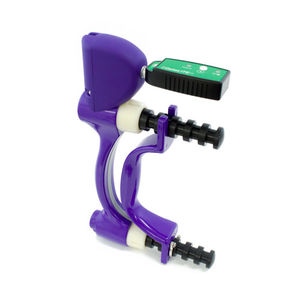

- Products
- Catalogs
- News & Trends
- Exhibitions
Movement sensor W Seriesjoint movementpositionvital sign
Add to favorites
Compare this product
fo_shop_gate_exact_title
Characteristics
- Evaluation type
- movement, joint movement, position, vital sign
- Applications
- medical, monitoring
- Other characteristics
- wireless
Description
Goniometers are ideal for quick, simple, and accurate measurement of dynamic joint movement in multiple planes. Extremely robust, lightweight and flexible, the sensors can be comfortably worn undetected under clothing, without hindering the actual movement of the joint.
Twin-Axis Goniometers simultaneously measure angles in up to two planes of movement. To measure wrist movements, the endblocks of the Goniometer are attached on the dorsal surface, one end over the third metacarpal, the other over the midline of the forearm, with the wrist in neutral position.
Goniometers have two separate output connectors, one measures flexion/extension, the other radial/ulnar deviation. When used to measure a single-axis joint such as the knee or elbow, or when measuring a single plane of a twin-axis joint, simply connect one channel.
All Twin-Axis Goniometers function the same way, the difference being physical size and are available as wireless (W Series) or wired (SG Series) options.
Goniometric data includes: Angular displacements, velocities and accelerations; min, max, mean, repititions, number of events over or under a set threshold, percentage time spent in and out of set limits, time to min/max etc.
Goniometer sensors and systems are used extensively in the fields of ergonomics, sports science and medical research where measurements are commonly taken for a wide range of applications such as:
Biomechanics
Ergonomics
Gait Analysis
Sports Science
Clinical Settings
& Many More!
*Prices are pre-tax. They exclude delivery charges and customs duties and do not include additional charges for installation or activation options. Prices are indicative only and may vary by country, with changes to the cost of raw materials and exchange rates.
















